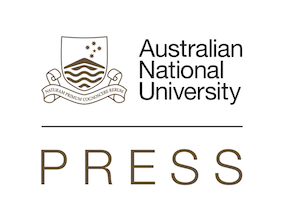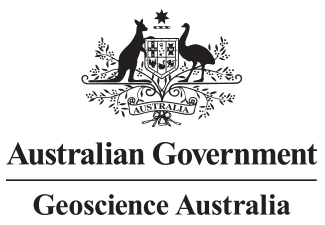Shaping a Nation: A Geology of Australia
This content is being archived
Please be informed that this content is in the process of being archived. Please see our Legacy Publications page for further information.

Cover image of Shaping a Nation:
A Geology of Australia,
(Kings Canyon, Northern Territory).
© Jim Mason
Shaping a Nation: A Geology of Australia is the story of a continent's geological evolution as seen through the lens of human impacts. Exploring the geology, resources and landscapes of Australia, the book reveals how these have helped to shape this nation's society, environment and wealth. Presented in a refreshingly non-linear format, the book summarises much of what we know about this country's geological history, discussing the fossil record and evolution of life across the continent, describing its mineral and energy reserves, and revealing the significance of its coastal and groundwater systems.
The book also explores some of the challenges and opportunities presented by Australia's rich geological heritage, and outlines the issues they present in Australian society today. Based on much of the latest science, the book reveals Australia's expertise in the geosciences and reinforces the vital role they play in informing its present and future development.
In presenting the latest geoscientific knowledge, Shaping a Nation is vividly illustrated by technical drawings and figures and accompanied by stunning photography that reveals the extraordinary beauty of Australia's geology and landscapes.
For the avid reader, an accompanying DVD hosts extensive appendices, including supplementary reading and reference material, maps, movies and an interactive 3D model showcasing many geoscience datasets.

Shaping a Nation: A Geology of Australia is published by the Commonwealth of Australia (Geoscience Australia) and ANU Press. A free PDF version is available on the ANU Press website.
Printed copies are available to purchase for $70.00 AUD incl GST (plus shipping) from our online Web Store.
Contents
1 Australia and the Australian people
![Sydney city skyline and harbour bridge. Copyright Getty Images [D Joyner]. Sydney city skyline and harbour bridge. Copyright Getty Images [D Joyner].](https://www.ga.gov.au/__data/assets/image/0009/16110/Ch_1_Getty_108351929_RL-resized-SMALL.jpg)
© Getty Images [D Joyner]
The demography, history and culture of the Australian people have been shaped by Australia's size, geographical remoteness, ancient soils and landscape, arid climate, flora and fauna, and bountiful mineral and energy resources. These influences are the result of a rich, and in some ways, unique geological heritage - making Australia a truly 'lucky country'. Australians today number more than 22 million people; we are a diverse nation, having originated from more than 200 other countries. We are custodians of 27.45 million km2 of Earth, including the continent's mainland and offshore extensions, numerous offshore territories, marine zones and a large part of Antarctica.
2 Australia in time and space

© Jim Mason
The geology of Australia has exerted a fundamental influence on the welfare and lives of the Australian people and their economic and environmental sustainability. How did Australia's remarkable geology develop, from its deep-time roots in the Archean to the present, and how has this development affected the distribution and abundance of Australia's economic and environmental resources? This chapter provides a summary of Australia's geology in terms of time and space - how Australia was assembled and how it interacted with other continents to produce a rich geology, flora, fauna and landscape. Australia, as a nation continent, has been systematically mapped, and numerous geological and geophysical maps and datasets are available to advance our understanding of the continent.
3 Living Australia

© Adrian Yee
Although the major features of the evolution of life have shaped the flora and fauna on whichever continent one explores, each has its own peculiarities. These are largely because of differences in each continent's tectonic and climatic history, coupled with the timing of evolutionary events. So, in its own way, each continent is unique. But of all the continents, Australia is special, at least in part because of its recent relative isolation from other large continental masses - an isolation that is only now coming to an end. The changing biosphere has also had a profound effect on the atmosphere, hydrosphere and lithosphere.
4 Out of Gondwana
![Rocky coastline. Copyright Getty Images [P Walton]. Rocky coastline. Copyright Getty Images [P Walton].](https://www.ga.gov.au/__data/assets/image/0012/16113/Ch4_GettyImages_123531291_RL-resized-SMALL.jpg)
© Getty Images [P Walton]
This is the story of how the island continent of Australia emerged from the supercontinent of Gondwana, and the far-reaching impacts of this history on Australian resources, economy and society. We owe our energy resources of coal, oil and gas to Gondwana and its breakup, and hence an Australian economy dependent on fossil fuels. The isolation imposed by the breakup has been fundamental to how life developed in Australia and has shaped Australian society in response to the tyranny (or opportunity) of distance. This chapter focuses on how Gondwana broke up, why the fossil fuels are where they are, why their discovery and exploitation have followed the pattern that they have, and why all that is important to Australians.
5 Old, flat and red - Australia's distinctive landscape

© Mark Gray
Most of Australia's landscape is stark, and the climate is harsh. The landscape is also remarkably flat, with an average elevation of only about 325m and local relief never more than 1500m. As a result, many of Australia's major rivers are slow flowing, commonly into salt lakes in the arid interior. A thick regolith also blankets much of the continent. Sustained weathering has resulted in the formation of abundant iron oxides in the regolith, giving the Australian landscape its distinctive red colour. The regolith holds great wealth for Australia, but can also present challenges for mineral exploration. Human occupation over the past 50 000 years, and especially the last 200 years, has left a significant mark on the landscape.
6 Living on the edge - waterfront views
![An Australian city coastline. Copyright Getty Images [Panoramic Images]. An Australian city coastline. Copyright Getty Images [Panoramic Images].](https://www.ga.gov.au/__data/assets/image/0014/16115/Ch6_GettyImages_73025740_RL-resized-SMALL.jpg)
© Getty Images
[Panoramic Images]
Australia developed as a nation of coastal fringe dwellers even before the realisation in colonial times that there was no inland sea and the continent had a 'dead heart' of desert and scrub. The maritime character of the nation developed with the reliance on coastal seas for transport and trade during European settlement, through to the present day where the coast is the setting for most of Australia's population, industry, tourism and recreation. The geological history of the coast and its distinctive configuration, landforms and environmental regimes have produced a unique, highly diverse continental margin. In turn, the coast has profoundly influenced the pattern of settlement and development of Australia.
7 Groundwater - lifeblood of the continent
![Windmill in canola field. Copyright Getty Images [Panoramic Images]. Windmill in canola field. Copyright Getty Images [Panoramic Images].](https://www.ga.gov.au/__data/assets/image/0015/16116/Ch7_GettyImages_pan88411_RL-resized-SMALL.jpg)
© Getty Images
[Panoramic Images]
This chapter explores the journey of the development and use of Australia's groundwater resources, from the first Australians, to the frontier settlers, to the present day. Over this time, some 50 thousand years, the changes to groundwater systems in Australia have been profound. Water availability has shaped life and society in many ways, with aridity shaping the landscape and soils and determining where we live, grow our crops, raise animals and build our cities in this, the driest inhabited continent. Recognising the connections that groundwater can have with rivers, wetlands and ecosystems means understanding groundwater processes, and this, underpinned by the knowledge of geology, is fundamental to resolving many of Australia's natural resource management problems. Our understanding of these connections has improved, and emerging technologies have helped with management of Australia's groundwater for people, now and in the future.
8 Foundations of wealth - Australia's major mineral provinces

© Jim Mason
Since the 1850s, Australians have prospered not only from the wool off the sheep's back but also from the mineral wealth bequeathed by Australia's geological history. Our mining history has contributed significantly to our national identity. Much of the country was explored and settled because of its vast mineral wealth. Today, Australia's economy is highly dependent upon minerals that provide most of our export income. Major mineral provinces in Australia - the Victorian goldfields, the Eastern Goldfields in Western Australia, Broken Hill, Mt Isa and Olympic Dam - although linked to different tectonic events, share many commonalities. These include a spatial association with major fault zones, a temporal association with major thermal events, an association with changes in tectonics, and a broad association with major crustal boundaries. This mineral wealth was created as a consequence of the large-scale tectonic processes that built Australia from its disparate elements.
9 Sustaining Australia's wealth - economic growth from a stable base

© Eric Taylor
Despite continuing global supercontinent cycles, the Precambrian core of the Australian continent has endured. Most of the continent is now remote from active plate boundaries, and this, together with its core strength, has ensured relative geological stability over the last 200 million years. Much of the continent is deeply weathered. The relative stability, however, has ensured that the vast mineral and energy resources of Australia have been preserved and, indeed, created. These resources include the bulk commodities of iron ore, bauxite, coal and natural gas, which now generate much of the wealth for the Australian people. The resources sector, to which these bulk commodities contribute the majority of the value, is worth over $206 billion per year to Australia in export earnings. Increasing demand from our Asian neighbours is driving further growth in the sector. Demand for Australia's natural resources, coupled with sound financial management and governance, ensured that Australia largely avoided the ravages of the 2008 global financial crisis (GFC).
10 Deep heat - Australia's energy future?

© Sam Clark
Australians love energy. Almost all facets of our modern life depend on it. For much of Australia's European history, our major energy sources have been from hydrocarbons. These, however, are non-renewable and come with increasing environmental and other concerns. In a carbon-constrained future, where will Australia's energy come from? What will power us into the next century and beyond? The answer is literally beneath our feet - our radioactive heritage. Australia is endowed with uranium (U), thorium (Th) and resultant thermal energy. The energy generated by the natural breakdown of radioactive elements is immense and can be captured not only by fission of U and Th in nuclear reactors, but by the use of geothermal energy, using Earth's in-situ heat from this radioactive decay to generate electrical power. Both have potential to supply energy for Australia for thousands of years, particularly geothermal energy - it is renewable and environmentally friendly, and Australia has vast thermal resources, which, if harnessed, could power our future.
11 Advance Australia Fair
![Child playing at the beach. Copyright Getty Images [A Lumsden]. Child playing at the beach. Copyright Getty Images [A Lumsden].](https://www.ga.gov.au/__data/assets/image/0010/16120/Ch11_GettyImages_141945773_FA_flipped_RL-resized-SMALL.jpg)
© Getty Images [A Lumsden]
Does civilisation only exist by geological consent? The previous 10 chapters in this book suggest that this statement might be true, by showing the manifold ways in which the geology of the Australian continent, and its marine extensions, has shaped Australia and continues to shape the people. This concluding chapter looks briefly at the opportunities and challenges that Australian geology creates for the future of this nation.




